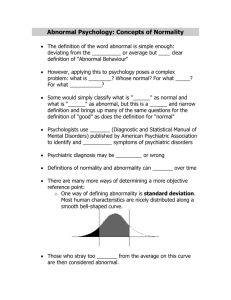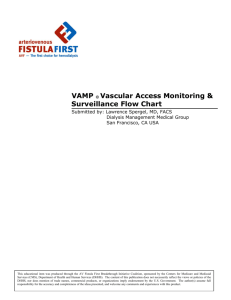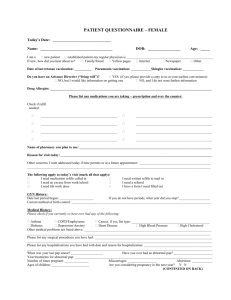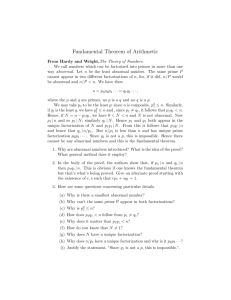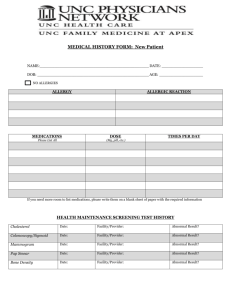The Use of Event Studies in Finance and Economics
advertisement
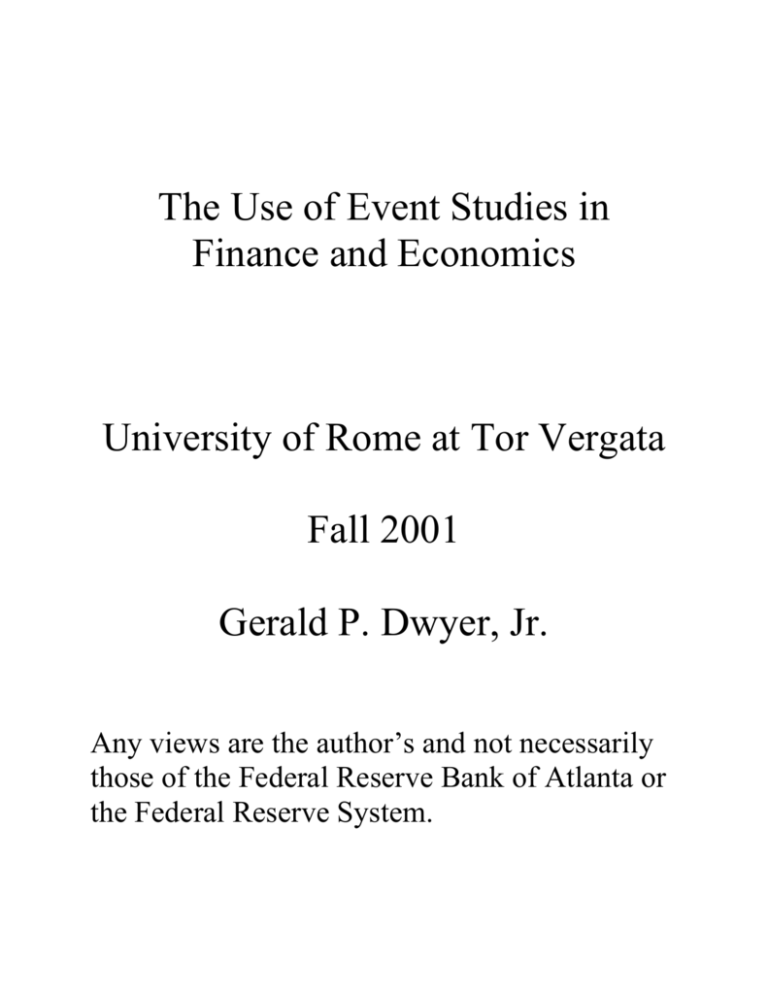
The Use of Event Studies in Finance and Economics University of Rome at Tor Vergata Fall 2001 Gerald P. Dwyer, Jr. Any views are the author’s and not necessarily those of the Federal Reserve Bank of Atlanta or the Federal Reserve System. Overview of Event Studies Event studies examine the effect of some event or set of events on the value of assets Loosely speaking, a t-test of the change in price of some asset Unexpectedly large increase or decrease - relative to standard deviation of typical change 1 Overview of Event Studies Value of assets Firms’ stock prices are the most common Exchange rates Bond prices Key thing needed is frequent trading relative to the “event window” 2 Overview of Event Studies Event or set of events Stock splits Earning announcements Merger or takeover announcements Regulatory change - Recent U.S. banking legislation allowing commercial banks to have investment banking operations - Introduction of pollution regulations 3 Overview of Event Studies What makes something an event? Some change, development, announcement that may produce a relatively large change in the price of the asset over some period - Define an event window – a period over which the event occurs - Define an estimation window – a period over which parameters are estimated - Want the event window to be short relative to the estimation window 4 Formal Definition of Event Window (T0...T1] is estimation window (T1...T2] is event window (T2...T3] is post-event window Index returns in time (J) - Estimation window J ranges from T0+1 through T1 Event window J ranges from T1+1 through T2 Post-estimation window J ranges from T2+1 through T3 Following Campbell, Lo and MacKinlay (1997, Ch. 4 notation) 5 How Estimate Return Due to Event? Estimate return due to event “Abnormal” return Test is based on Abnormal return divided by Standard deviation of normal return How measure abnormal return? - Have return during the event window - Estimate normal return - Return during the event window minus normal return is the abnormal return - Have to have estimate of normal return 6 How Estimate Return Due to Event? No underlying theory of asset prices Average return - Constant-average return Market model Riτ = α i + β i Rmτ + ε iτ - E ε iτ = 0 - How does market model differ from Capital Asset Pricing Model? Var[ε iτ ] = σ 2 No imposition of constraints from theory in market model Just using this to “allow for” changes in firm i’s stock price relative to the market 7 How Estimate Return Due to Event? Theoretical models of asset prices Capital Asset Pricing Model - Constant risk-free rate Rr - Riτ = R f + β i ( Rmτ − R f ) - Imposes constraint on constant term relative to market model Arbitrage Pricing Theory - Elegant, appealing theoretically and empirically - Little advantage in event study 8 Econometrics of Estimating Return Due to Event Use market model as basis Riτ = α i + β i Rmτ + ε iτ E ε iτ = 0 Var[ε iτ ] = σ 2 E[ε iτ ε iτ − j ] = 0 Ordinary least squares (OLS) is unbiased and efficient How calculate abnormal return in event window? Estimate market model equation by OLS using data from estimation window Calculate possible abnormal return in event window 9 Econometrics of Estimating Return Due to Event Estimated equation R = αˆ + βˆ R + εˆ iτ i i mτ iτ - the “hats” denote estimated values - for estimation window, J ranges from T0+1 to T1 Calculate potential abnormal returns - εˆiτ = Riτ − αˆ i − βˆi Rmτ - for event window, J ranges from T1+1 to T2 10 Econometrics of Estimating Return Due to Event Properties of potential abnormal returns Conditional on the hypothesis that abnormal returns are zero - Same statistical model E ε iτ = 0 and αˆ i E αˆ i βˆi = ˆ β i Vi = σ ε2i [I + X*i ( X′i ( X′i Xi ) −1 X*i ′ ] - X is the matrix of constants and market returns for the estimation period and X* is the same matrix for the event window 11 Econometrics of Estimating Return Due to Event Aggregate returns over time and across firms Over time to get “cumulative abnormal return” in event window - Can and usually do aggregate across different time periods to see if effect develops over time and, if so, when - We’ll ignore this for simplicity Across firms to get one test statistic for hypothesis - Usually hypothesis applies to many firms, not necessarily for the same dates 12 Econometrics of Estimating Return Due to Event Aggregate over time CARi = T2 ∑ τ =T1 +1 εˆi*τ 2 ′ Var[CARi ] = σˆ CAR ,i = 1 Vi 1 L2 = T2 − (T1 + 1) + 1 = T2 − T1 CARi is Cumulative Abnormal Return for firm i Under the null hypothesis of no abnormal return, the abnormal return is CARi zero and the distribution of is σˆ CAR ,i Student’s t with L2-2 degrees of freedom 13 Econometrics of Estimating Return Due to Event Aggregate across firms Exact statistic depends on whether or not the abnormal returns are independent or dependent Suppose independent for simplicity CAR = N −1 N i =1 CARi 2 = N −2 Var[CAR ] = σ CAR N i =1 2 σˆ CAR ,i Under the null hypothesis, the distribution of CAR σ is CAR asymptotically normal with zero mean and unit variance 14 Usefulness of Event Studies Event studies have been used to look at almost every issue in corporate finance Stock splits Dividend changes Stock issuance Firms’ activities more generally Merger and spinoff announcements Hiring or firing of high-level officers Regulation Changes in banking regulations Changes in pollution regulations 15 Usefulness of Event Studies Can examine who gains and who loses from changes in regulation Securities and Exchange Commission uses event studies to determine if there has been insider trading before an announcement How? Major econometric issue that could arise in an event study The event date may not be independent of the behavior of the stock price - Low recent returns may cause something to happen that determines the event. - In short, event date is endogenous - Evidence is that this issue is unimportant 16 Usefulness of Event Studies Event studies are not a substitute for thought any more than are vector autoregressions 17 References I have followed the notation and included at points a more straightforward exposition of the material in the best single reference of which I am aware: Campbell, John Y., Andrew W. Lo, and A. Craig MacKinlay. 1997. The Econometrics of Financial Markets. Princeton: Princeton University Press, Chapter 4. 18



